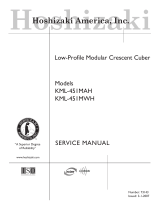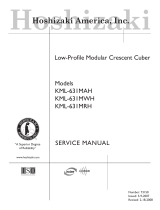
3
CONTENTS
Important Safety Information ................................................................................................. 4
I. Specications ..................................................................................................................... 5
A. Nameplate Rating ......................................................................................................... 5
1. KML-451MAH (air-cooled) ....................................................................................... 5
. KML-451MWH (water-cooled) ................................................................................. 6
B. Dimensions/Connections .............................................................................................. 7
1. KML-451MAH (air-cooled) ....................................................................................... 7
. KML-451MWH (water-cooled) ................................................................................. 8
II. Installation and Operating Instructions .............................................................................. 9
A. Checks Before Installation ............................................................................................ 9
B. How to Remove Panels ................................................................................................ 9
C. Location ...................................................................................................................... 10
D. Setup .......................................................................................................................... 10
E. Electrical Connection .................................................................................................. 11
F. Water Supply and Drain Connections ......................................................................... 1
1. Icemaker ................................................................................................................ 13
. Water-Cooled Condenser ...................................................................................... 14
a) Connection to an Open Drain System ................................................................ 14
b) Connection to a Closed Loop System ................................................................ 15
G. Final Checklist ............................................................................................................ 16
H. Startup ........................................................................................................................ 17
III. Cleaning and Maintenance ............................................................................................. 18
A. Cleaning and Sanitizing Instructions .......................................................................... 18
1. Cleaning Procedure ............................................................................................... 18
. Sanitizing Procedure - Following Cleaning Procedure .......................................... 0
B. Maintenance ............................................................................................................... 1
C. Preparing the Icemaker for Long Storage ..................................................................
IMPORTANT
This manual should be read carefully before the icemaker is installed and
operated. Only qualied service technicians should install, service, and
maintain the icemaker. Read the warnings contained in this booklet carefully as
they give important information regarding safety. Please retain this booklet for
any further reference that may be necessary.





























